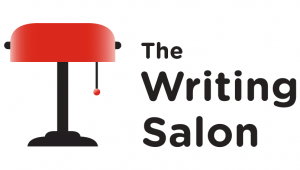 5 Sundays, May 14 – June 18 (skip May 28), 7-9:30pm
5 Sundays, May 14 – June 18 (skip May 28), 7-9:30pm
$275 members/$295 non-members
Testimonials for Terrel
The basic premise behind almost every successful feature film can be stated in one simple sentence: Someone we care about wants something badly and is having a terrible time getting it. “Pretty simple, right?” says Terrel Seltzer. “But how do you make a character sympathetic? How do you establish a compelling goal and desire (two important, related, but very different story elements)? How do you structure rising tension so that the Hollywood Reader keeps turning the page? That’s the art and the craft of screenwriting.”
The class will devote a week each to exploring five essentials of writing a screenplay:
- Breaking Story: In the beginning, you have an idea. But you need to map it out by asking fundamental questions: Is it a comedy or a thriller? How do you beat out a dramatically consistent beginning, middle, and end? Does it work better as a stand-alone movie or as a pilot for a television series? The goal is a blueprint of your script.
- Developing Character: A character we care about does one of two basic things: he changes (struggles through a personal transformational arc); or he dramatically changes the world around him. Some characters do both. Which kind of hero are you writing? And, key to figuring that out, we’ll ask: What is his or her fatal flaw?
- Maintaining Conflict: A good story is a life and death story. That doesn’t mean someone has to literally die, but something important must be at stake. Even a comedy can be defined as “a man in trouble” — and trouble means conflict. We’ll explore the different kinds of conflict your hero must face, both external and internal.
- Constructing Scenes and Sequences: Scenes are the building blocks of a script. But one trick of the trade is writing in sequences, which means thinking and writing in a series of scenes. We’ll explore how scenes make up sequences, and also the eight basic sequences a screenplay must have.
- Writing Visually: Most new screenwriters concentrate on dialogue. But a screenplay is a story told in images, so you must learn to write the picture. We’ll discuss format, word choice, tone, the art of “vertical writing” — all techniques to make your screenplay a page-turning read.
I fundamentally believe that anyone wanting to write a screenplay needs to read screenplays. Therefore, I build my classes around a script assigned for each week (free online) which I then use to illustrate the basic principles we’re discussing. By the end of the session we have five screenplays to use as tools for learning the trade, and we sometimes watch movie clips to see the “page to screen” result. I organize my class as fun, informative, and low stress — meaning students are encouraged to bring in pages to share, but other than reading the suggested weekly script, there is no other homework assignment. The ultimate goal of the five weeks is to help my students understand the very unique, demanding, and beautiful form of the screenplay.
Terrel Seltzer is a self-taught screenwriter. She learned the craft by watching and outlining literally hundreds of movies. Her career started in the Bay Area, working with SF director Wayne Wang, for whom she wrote the screenplays for the independent films Chan Is Missing and Dim Sum. In addition, she wrote the screenplays for How I Got Into College (Lara Flynn Boyle and Anthony Edwards), One Fine Day (Michele Pfeiffer and George Clooney) and The Rendezvous (Stana Katic and Raza Jaffrey). Little Beauties (Aya Cash) is scheduled for production in the fall of 2017. Terrel’s current writing assignment is a feature inspired by the book The Fall by Todd James Myers for Dragonfly Films.
